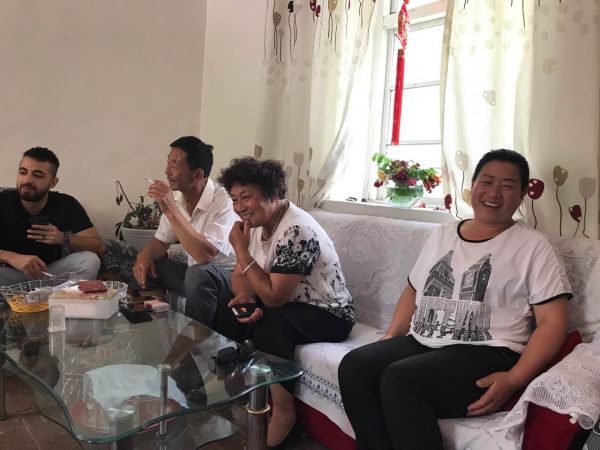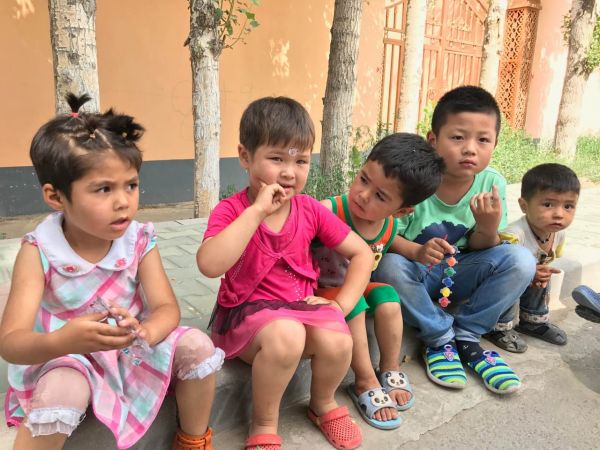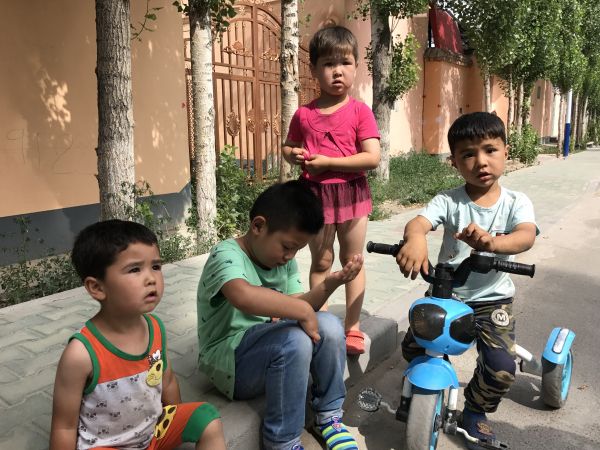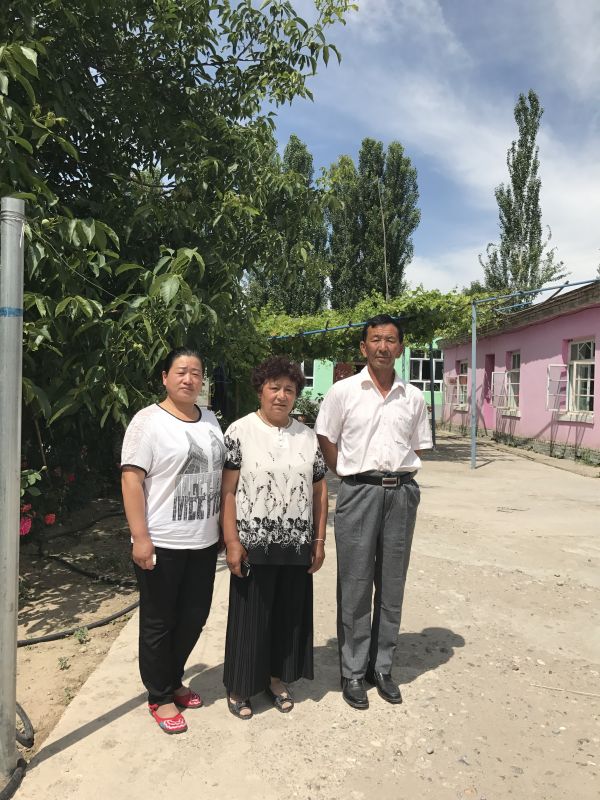
Mitka (2nd,L), Tursunay (2nd,R) and their daughter-in-law (1st, R)
Tursunay, a villager in northwest China's Xinjiang Uygur Autonomous Region, reels off a handful of phrases in the local dialect of Henan, despite never having been to the province thousands of miles away.
"Zhong [yes], sha [what], an [I]. I learned these words from my daughter-in-law," she said.
Tursunay, 61, and her family live in rural part of Huocheng County in Kazakh Autonomous Prefecture of Yili.
The Tursunays are proud of being what they call a "united ethnic" family: Tursunay is Uygur; her husband, 65-year-old Mitka, is Daur; and their daughter-in-law is Han.
"Our big family has many ethnicities, as my sister married a Xibe man, and the younger brother of my son-in-law has a Hui wife," said Mitka.

Children of different ethnic backgrounds play together.
MIXED INHABITATION FROM QING DYNASTY
The Daur and Xibe emigrated from northeastern China during the Qing Dynasty (1644-1911), joining the communities of Uygur, Hui and other ethnics in Xinjiang.
The 23 million people that live in Xinjiang are from 47 ethnic groups, composed of 13 indigenous peoples and the others that have immigrated here historically.
Tursunay and Mitka were neighbors and playmates when they were young. "He was handsome, funny and hard working, and often helped me sell my family's produce at market," Tursunay recalled with a smile.

"She stood out among the nine girls pursuing me," said Mitka, responded as his wife burst into girlish laughter.
Tursunay's mother initially objected to the union on the basis of religious differences: Tursunay is Muslim, observing traditions like eating halal food.
"But we insisted. My mother had no choice," said Tursunay.
The couple had two sons and two daughters. The first son looks like a typical Uygur, like his mother, with big eyes and thick eyebrows. His wife, Yu Zhixiu, a Han woman from Henan, said it was his strong, handsome appearance that made her decide to marry him.

"Being a friend of my elder brother, he often came by for dinner. He liked my cooking very much," Yu said with a smile. "They do say the way to a man's heart is through his stomach!"
The family respect their different customs, and celebrate all festivals together, such as iftar, breaking of the fast, and Lunar New Year.
Their dinner table is as dynamic as the family that eat around it. At any given gathering, the spread can include leghman (Uygur noodles), Xinjiang-style rice and milk tea, a favorite of the Daur.
"We will ask a Uygur man to slaughter a lamb for a family gathering, so that it is suitable for our Uygur relatives to eat," said Mitka.
Different ethnic groups related by marriage are common in Xinjiang. Despite the various customs and multiple languages among China's 56 ethnic groups, they live harmoniously with no clear boundaries.

NEIGHBORS, FRIENDS
Wang Jinxiang's family, who identify as Hui, have lived next door to their Uygur neighbors for several generations. The two households now share a yard.
"We grew up together. If my wife goes out, my neighbor will bring lunch for my son and I, or invite us over to eat," said Wang, who lives in Sandaohe Township, Huocheng County.
Wang, 43, ran a restaurant in the prefectural capital Yining before returning home to take care of his sick mother two years ago.

(beginning from right,) Mitka, Tursunay and their daughter-in-law
"My neighbor is good at cooking, so we plan to run a family inn, with him as the chef," he said, adding Uygur and Hui cuisine are popular in tourists and vital for family inn operation.
Beken, a Kazakh official in charge of ethnic and religious issues in Yili Prefecture, said multicultural communities are common across China.
"There are no 'no-go areas.' Villages, companies, schools, all welcome people regardless of their ethnic group. The geographic intimacy among them has helped boost mutual understanding and respect," he said.

